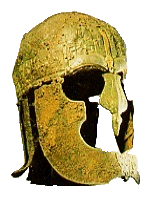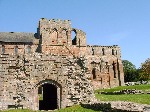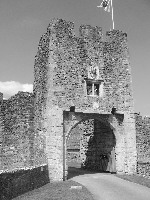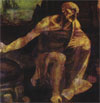Medieval World Information
News
- coming soon
Links
Site Info
Welcome, Guest
Popular Heresy in the 12th Century
Heresy was defined by the medieval Church as publicly avowed opinion, based on the scriptures and human beings' interpretation of them, which was counter to the church's teaching.
Background
Significant elements in this definition are that:- the church's teachings and the scriptures are placed in almost a contradictory role; the characterisation of a belief as heretical requires not so much that it be held but that it be held openly and promulgated. That is the church was concerned about movements not an individual's doubts; heresy involves putting human interpretation of the scriptures above the church's interpretations (i.e. the divine); the church's teaching must necessarily be correct.
(Pre 12th century)
Clearly, the medieval church's practices and teachings ran counter to the scriptures in many ways. Both inside and outside the church, there had been movement for reform since the beginning of the 10th century. The early heresies were very different in their origins, arguments and the social bases of their appeal - whether arising from a peasant's dreams (Letard of Vertus) or the faith of the poor (Arras), of clerks (Orleans), or nobles (Gerard of Montforte.) However, they shared the characteristics of disobedience to the church, rejection of the pope's authority and a willingness to interpret scripture in their own way. The heretics sought salvation through personal experience, belief and devotion, rather than through the church.
At the same time there were movements for reform within the church, most notably the Cluniac movement, which brought a reformed monasticism. The earlier heretical movements had disappeared by the end of the 11th century, probably due to the influence of the reform movements within the church, although also reflecting the Church's ruthless response to heresy.
(12th century)

The church reformers had raised debate over many issues such as the fitness of priests to perform offices. (e.g. Peter Damien's 1059 judgement on the Paterne movement and Alexander II and Gregory VII's preaching against Bishops who had allowed simony and clerical marriage tended to bring the validity of the church's sacraments into issue.) In the 12th century, there was increased questioning of the church's authority and a growth in heretical movements.
Separate movements
The early 12th century heresies shared common traits - they disputed sacraments, and spiritual authority. E.g. 1110-15 Tanchelm 1120 Trier 1135 Liege. These movements tended to appeal mostly to the urban & rural poor.
Henry of Lausanne 1116, promoted an alternative faith, which showed many of the characteristics that later became identified with Protetstantism. This movement was supported by traders, shopkeepers, craftsman and feudal nobility. (imprisoned)
1140s Arnold of Brescia emerged as leader of a popular movement in Rome (poor, lower levels of the nobility and clergy) which sought the removal of the church from involvement in temporal matters. (hung, burnt)
Cathars mid 12th century, strongest in the south of France, rejected Church practices that were not founded in the New Testament and rejected Church authority. They sought salvation through actions - the purification of the soul through freeing it from the demands of the body - rather than faith.
Waldensians late 12th century, rejected many of the aspects of the church, except mass and baptism. They followed the goals of poverty and evangelism.
How heresies emerged and spread - common factors
There was widespread poverty and powerlessness among the mass of the people. This led to anger at the wealth, power and hypocrisy of the Church and a reaction against the church's dominance of religion and society.
Most heretical sects had charismatic leaders who offered salvation, following more direct routes - through rejection of evil and the search for purity - than the church did.
The processes of internal reform in the church had led to the church itself questioning its own practices. The influences that led to a reformed monasticism were similar to those promoting heresy. However, there were also important distinctions - heretics rejected the sacraments, institutions and authority of the church, they sought salvation through individual ethical conduct.
Population changes had broken many of the ties that prevented individuals from leaving their locality, with an increase in travelling preachers who could spread their beliefs.
Geographically specific factors were significant in spreading some heresies. (e.g. in southern France the church was disunited.)
Heresy attracted those who were not prospering under the social changes of the time - the urban and rural poor, knights, small traders and artisans. The growth of towns encouraged the spread of heretical ideas. Social differentiation was becoming more apparent with the growth of wealth. Heretical movements offered roles and membership of a community to those who were not prospering.
Some heretics were burnt or imprisoned but church opposition was piecemeal until the mid 12th century. Under Innocent III 1198-1216, a serious drive against heretics began - preaching and religious societies were to be controlled, the legal position of those declared heretics was to be infamia with exclusion from society and a loss of rights and property. In 1208 a crusade was launched against the Albigensian heretics. The following pope Gregory IX developed procedures for formal inquisitions.


